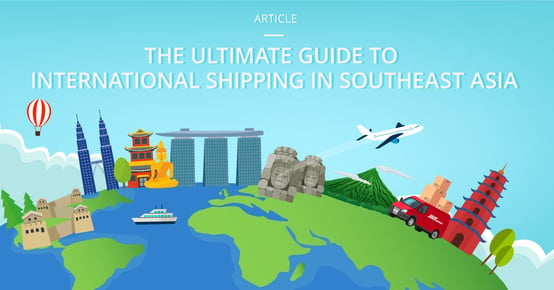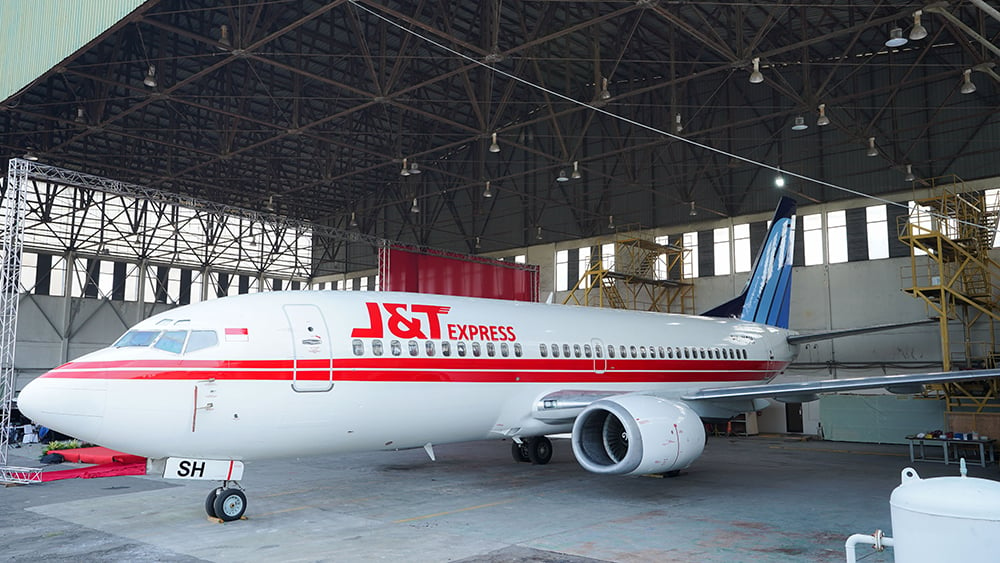Cross-border eCommerce in Southeast Asia is predicted to grow exponentially in the coming years. Singapore and Malaysia alone account for more than 50% of the total cross-border eCommerce market in the region, and 55% of all online transactions in Singapore involve overseas sellers.

In Asia-Pacific, business-to-consumer (B2C) cross-border eCommerce accounts for 31% of all online sales.
According to the 2018 Cross-Border Consumer Research Report by Paypal, the main driver of cross-border shipping is cost, where consumers find better deals on foreign websites than what’s locally available. Cost is followed by accessibility and the discovery of new and interesting products.
Savings, shipping, and security will continue to be key drivers of international sales in the future.
Covid-19 also seems to be whetting Southeast Asians’ appetite for cross-border eCommerce. According to S&P Global, there’s been an uptick in downloads for Alibaba’s cross-border eCommerce platform AliExpress in Malaysia and Indonesia.
This presents a valuable eCommerce opportunity. Experts predict that merchants who offer their products to international customers enhance their sales by 10% to 15%.
As eCommerce continues to develop, sellers can leverage international or cross-border delivery to capture this opportunity and maximise sales.
The novelty of international shipping
Today’s eCommerce customers have access to global marketplaces thanks to international shipping. Products that were once out of reach and unavailable in the country are now accessible with a couple of clicks. This gives eCommerce sellers the chance to tap into new markets and expand their reach at an affordable rate.
Historically, though, international shipping has been painful for Southeast Asia. The complexity of customs, fragmented cultures, and archipelagic terrain of the region make cross-border shipping a challenge. Not only do these result in longer travel times, they also hike up the price for international shipments significantly.
But cross-border online sellers can’t afford to risk a poor international shipping experience. After all, logistics plays a huge role in the customer’s perception of the platform's trustworthiness. Plus, the competition to snag Southeast Asians’ shopping carts is getting stiffer by the day—and quality delivery services are now a huge factor of success for online sales.
That means cross-border eCommerce sellers must be able to provide customers with:
- Reliable delivery services where packages arrive in good condition
- Faster services, such as express options
- More options (e.g., cheaper standard deliveries, parcel pick-up)
- Extensive coverage
But when it comes to international shipping, that’s easier said than done.
the challenges of international shipping in Southeast Asia
International shipping consists of the following steps:
- Order is created
- Parcel is picked up
- Parcel goes through first-mile delivery to the warehouse
- Parcel goes through origin country’s customs
- Parcel crosses the border (airfreight)
- Parcel goes through destination country’s customs
- Parcel is dispatched at warehouse
- Parcel goes through last-mile delivery to the buyer
- Parcel is received by the buyer
While this might seem like a straightforward process, every step along the parcel journey comes with its own set of challenges. One delay in the process can create a chain reaction down the line.
The problem might happen right at the start if a customer provides incorrect or insufficient information for delivery. If the information is incomplete, the parcel could be stopped halfway or will not be able to get past customs. Couriers that use cheap paper and ink also run the risk of losing information on the label. The ink could possibly fade or the label itself could tear off from inadequate adhesion.
Not to mention certain destinations suffer from traffic congestion. Metro Manila, for example, has the second worst road traffic in the world. Deliveries in this area can easily result in delays and impact the last mile.
To better understand the challenges of cross-border shipping across Southeast Asia, these are some key points to keep in mind:
- Southeast Asia’s fragmented landscape
- Customs and duties
- DDU vs DDP
Southeast Asia’s fragmented landscape
As mentioned earlier, Southeast Asia consists of several countries that are unique in terms of culture, landscape, and policies. This has a significant impact on the ease of eCommerce fulfilment in the country.
Singapore, for example, stands out because of its efficient customs clearance protocols, developed transport infrastructure, and overall logistics competence. Meanwhile, the Philippines leaves a lot to be desired in all these aspects, owing to its challenging geography and congestion problems. According to the TomTom traffic index, the country’s capital region of Manila ranked second in terms of road congestion in the world in 2019.
The World Bank rates the efficiency of eCommerce fulfillment in each country through its Logistics Performance Index (LPI). The ratings are based on six factors:
- Customs clearance and efficiency
- Trade- and transport-related infrastructure
- Ease of arranging competitively priced international shipments
- Competence and quality of logistics services
- Tracking and tracking
- Timeliness
In 2018, this is how Southeast Asian countries performed:
If your business is planning on offering international shipping to and from different markets, this is something to consider.
Customs and duties
Customs, tax laws, and shipping legislations also vary from country to country. To do international shipping correctly, you need to understand the nuances for each country—from how to successfully navigate customs to what you can and can’t sell to certain countries.
For example, all goods purchased in Singapore are subject to 7% Goods and Services Tax (GST). But if Singaporeans purchase their goods overseas, they don’t need to pay the 7% tax as long as their total order value is below S$400. For orders above that threshold, it’s either the seller or the buyer who will have to pay for that tax at customs—but more on that later.
Singapore also has strict rules about what cannot be shipped into the country. Chewing gum, for instance, would require a permit from the relevant controlling authority. Here’s a list of prohibited items:
- Chewing gum (except dental and medicated gum)
- Chewing tobacco and imitation tobacco products (e.g. e-cigarettes)
- Cigarette lighters in the shape of a pistol or revolver
- Controlled drugs and psychotropic substances
- Firecrackers
- Obscene articles, publications, videotapes, videodiscs and software
- Reproductions of copyright publications, videotapes, videodiscs and laser discs, records and cassettes
- Seditious and treasonable materials
Sellers will need to provide a customs declaration with every shipment, which is a form that enumerates the details of the items being imported as well and their declared shipment value. This is required in all countries across Southeast Asia and will determine whether or not you will have to pay tax.
Most countries in the region have already ratified their eCommerce tax laws. But some countries are still in the process of passing one, which means that tax laws and regulations could change in a couple of years.
You’ll need to familiarise yourself with a glossary of terms so you can understand the process and speak the same language as the customs officers
DDU vs DDP
Speaking of a glossary of terms, DDP and DDU are two important ones to remember because they involve taxes.
Countries have tax thresholds when it comes to ordering items offshore. This is referred to as the “de minimis” rate. Like we mentioned earlier, any international orders worth S$400 and above will be subject to Singapore’s 7% tax. Someone needs to shoulder those costs.
To figure out who will be paying the tax, you need to understand DDU and DDP.
Delivery Duty Unpaid (DDU) means that each party is responsible for its corresponding fees. For example, the seller will pay for a parcel’s packaging and shipping costs for the destination country, but it’s the buyer’s responsibility to take care of any customs duties and clearance fees, if any. Hence, delivery duty is unpaid.
Fees for the buyer may include:
- Licenses for importing goods
- Taxes, duties, and inspection costs
- Possible customs brokerage fees
- Parcel transport fees from customs to the buyer’s delivery address
Delivery Duty Paid (DDP) means that the seller will absorb all costs in full before shipping out the order. These eCommerce websites usually calculate the tax estimates before checkout and include it in your final order price. That means all the buyer has to do and sit and wait for their package to arrive.
Fees for the seller may include:
- Transport of goods
- Taxes on sales of goods
- Customs clearance fees and customs declaration
- Import costs
- Documentation
- Handling expenses
- Local shipping
While DDP seems like it would be the better option for customers, if buyers do not go over their tax threshold (nor buy prohibited items), then DDU can offer the same seamless experience. On the other hand, DDU may also lead to cart abandonment because of the hassle involved with dealing with customs.
In the end, each option has its pros and cons and you’ll have to make the call on which would serve your business and your international customers better.
All this can be solved by hiring the right logistics partner
These are a lot of things to keep in mind, but don’t worry—getting the right logistics partner who can guide you through these processes will be key in ensuring smooth and successful cross-border shipping.
Not only will this minimise the risk of incurring costly mistakes and save you the headache of having to stay updated with shifting regulations, it will also allow you to enjoy the benefits of cross-border shipping at a cost-efficient price point.
Keep in mind that not all logistics providers offer the same thing. Some can take care of procurement while others specialise in last-mile delivery. But for busy eCommerce sellers who want to focus on growing their business, we recommend looking for a partner who can fulfil the end-to-end of the parcel journey with technology, as opposed to manual methods. Choosing a digital-first partner ensures efficiency, transparency, and great customer experience.
In addition, look for logistics providers that have:
- An extensive network across the region
- Local knowledge
- Expertise in international shipping
From there, it’s all about optimising your business for international delivery.
Best practices for international shipping
1. Familiarise yourself with customs laws in the region
There are no standardised rules and regulations when it comes to cross-border shipping in Southeast Asia. You’ll need to familiarise yourself with the local laws of each country, the documents required by customs, and any additional charges that may be incurred along the way—at least for the countries that you plan on opening deliveries to.
Any issues with customs clearance may result in delays of over a week—if the package isn’t delivered back to you, the sender.
To avoid incurring unnecessary delays, include a detailed description and complete list of items being delivered. Be sure to place contact information on the package so the courier or agency can inform you of any issues. Do note that shipping across Southeast Asia requires proper permits and licenses, which would make it ideal for you to partner with an eCommerce company when shipping internationally.
2. Label and package products appropriately
Parcels travel a long way for international shipments—and they need to survive the journey. Be sure to package your products using the appropriate safety precautions, depending on what’s being delivered. Any folds or dents may lead to unhappy customers.
Also, be sure to label correctly. That means providing the courier with the correct and valid address. Putting in the wrong address or mixing up labels can incur additional costs, delays, and thinner bottom lines.
Take note that road names may change, which can make it difficult to ascertain the exact address of the recipient. In these cases, it’s critical in partnering with an eCommerce company that has local knowledge.
3. Offer secure and preferred local payment methods
To entice international customers to buy from your shop, you need to play to their preferences. In countries like the Philippines, Vietnam, and Indonesia, cash is still king. After all, the majority of Southeast Asians are unbanked or underbanked, and therefore would not be able to patronise a digital-only shop. Do note that the availability of COD depends on the logistics partner you choose.
In mature markets like Singapore, credit cards are the primary eCommerce payment method, accounting for 68% of all transactions and US$3.3 billion in sales in 2018.
Whatever payment option you choose, you have to ensure that all these are safe, secure, and convenient. When it comes to buying products overseas, consumers will always factor in the credibility of the platform they’re buying from. Insecure payment methods will likely put off potential customers.
4. Offer different options for currency
Since customers prioritise cost when shopping internationally, it would be helpful to offer payment options in various currencies. The PayPal report showed that three in four customers prefer having an option to pay in their local currency, while six in ten check conversion rates before paying the suggested foreign currency.
For many, currency conversions is an opportunity to minimise cost and get the best possible deal when shopping internationally.
5. Consider your products wisely
As mentioned earlier, certain countries have specific restrictions when it comes to what can and cannot be shipped into their borders. You need to consider what you’re currently selling with market demand and country restrictions for successful international shipments.
For example, clothing, footwear, and accessories are among the most popular categories for international purchases, according to the PayPal report. But if you were selling clothing with lines from the Quran or Chinese characters for any reason, you wouldn’t be able to sell to the Malaysian and Indonesian markets respectively.
What’s more, not all products do well in transit. Food and snacks are a good example of products that are difficult to ship. Not only do these require stringent temperature control and environmental requirements, these also run the risk of getting crushed in transit.
6. Digitalise your logistics
If you’re handling logistics yourself, it would be beneficial to digitalise your operations.
While manual methods might save you some money in the beginning, it won’t be able to scale with your operations in the future. It also takes more time to pack and send out deliveries and makes the whole process prone to human error. The added hurdle of going through two different sets of customs duties means that complete and accurate information is imperative for getting your deliveries out safely.
Some options for digitalising your logistics include leveraging cloud logistics software to manage inventory and process orders or investing in track-and-trace technologies.
7. Keep shipments affordable
Keep in mind that many factors contribute to the final price of delivery, such as item weight and/or volume. The higher the weight, the pricier the shipment will be. Some couriers also charge fuel surcharges alongside their base rate for international shipments. And if your package needs special care or is oddly shaped, you may be slapped on additional package-handling fees.
Compliance and accuracy are also crucial to keeping prices low, as mistakes and delays can be very expensive. If your item needs to be stored in customs for an extended period, you may be charged warehouse fees. And if you ever consider under-declaring the value of your item to shirk taxes, your courier will be charged fees for undervaluing goods.
So in short, keep your costs low by complying with the law, providing complete and accurate delivery information, and doing your homework.
8. Be transparent with pricing
On that note, if your package may incur extra costs, you need to be upfront about these —whether customers are being charged extra for fuel surcharges, parcel pickups from remote locations, or handling fees for fragile or special materials, such as metal or wood. This is so you don’t inadvertently shock customers with high price tags after the fact.
It’s likely customers won’t be aware of all the costs and hidden charges that come with cross-border logistics—all they see is the final price tag of their order. If you can justify that price tag with the facts, it’s more likely they will understand. Transparency is key in getting to trust your brand.
9. Ship from strategic locations
When it comes to international shipment, whether it’s around Southeast Asia or even worldwide, location is everything. You will want to ship from an area that has existing shipping lanes that are readily accessible to deliver anywhere in the world. Singapore, for example, is an ideal port for cross-border shipping.
In fact, Singapore ranked first as the world’s most important shipping hub for the seventh year in a row, according to the Xinhua-Baltic International Shipping Centre Development (ICSD) Index. Singapore was followed by London, Shanghain, and Hong Kong in that order.
With its advantageous geographical location, advanced shipping industry ecosystem, and supportive government policies, the Lion City is the best place to conduct international shipments.
10. Optimise your store for mobile devices
This is a classic case of know-your-audience. Just like how most Southeast Asian customers prefer COD, most Southeast Asian customers also do all their shopping from their mobile devices.
According to Forrester, mobile is Southeast Asia’s channel of choice when it comes to online shopping. They do everything from research products to adding to cart on their mobile phones. So providing a seamless and consistent shopping experience for mobile devices, including tracking and tracing their shipments, will be crucial in capturing this market.
Hire the right logistics partner today
Thanks to advancements in technology and logistics networks, there are now courier services that can do the international end-to-end fulfilment process for eCommerce partners at an affordable cost.
By delegating your shipping and logistics to a third-party service provider, you can rest easy knowing they have the experience to handle all your international shipping needs. They can take on the grunt work, ensure timely and accurate encoding, and provide safe and reliable delivery to any serviceable address.
There are many logistics providers that you can work with, but you need to find one that meets your needs. Look for one that can handle the end-to-end of eCommerce logistics, from fulfilment to delivery.
If you’ve been looking for a partner that can do just that, J&T Express offers fast, reliable, and affordable international shipping as well as fulfilment and warehousing. Contact J&T Express to unlock international shipping today.





